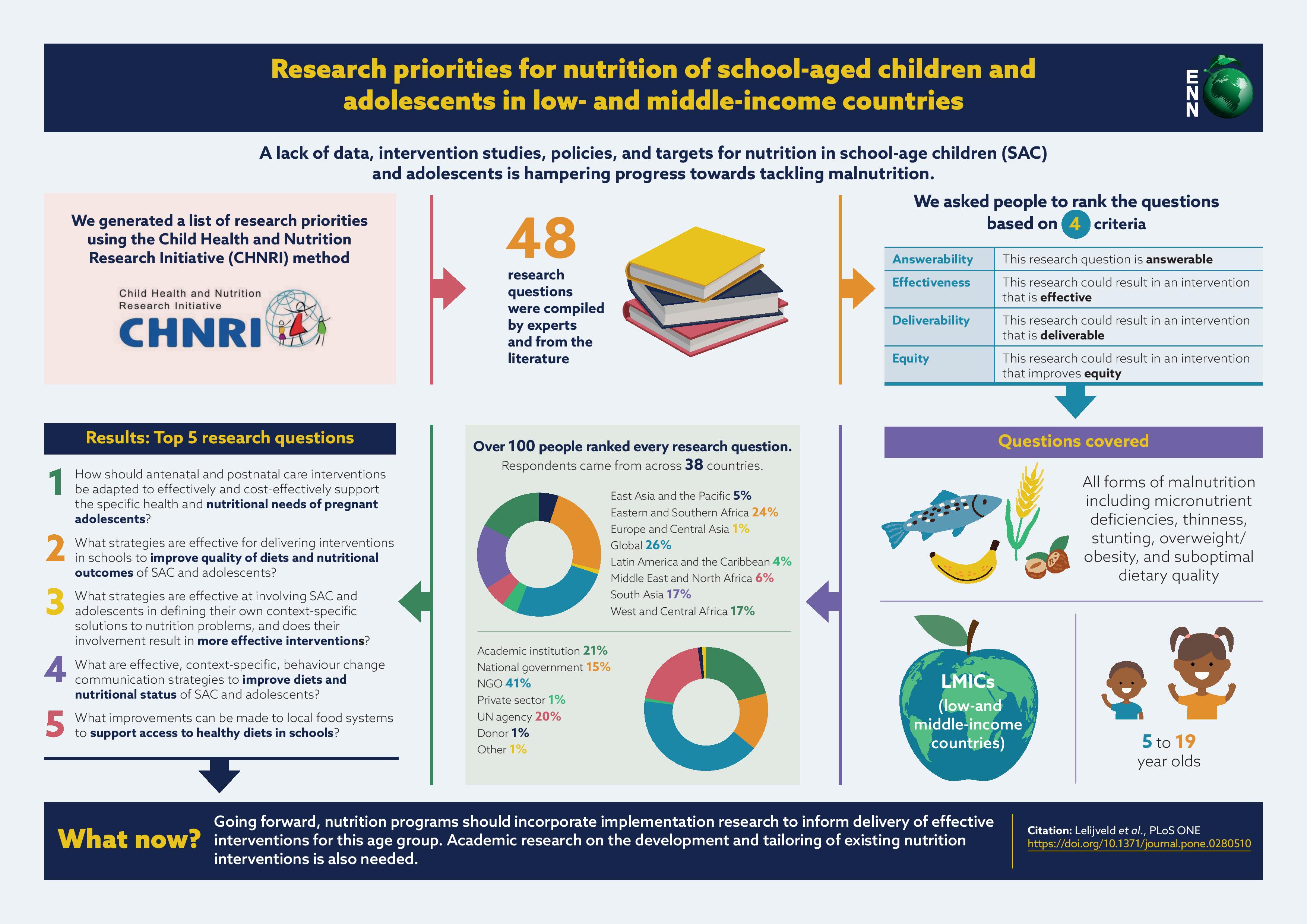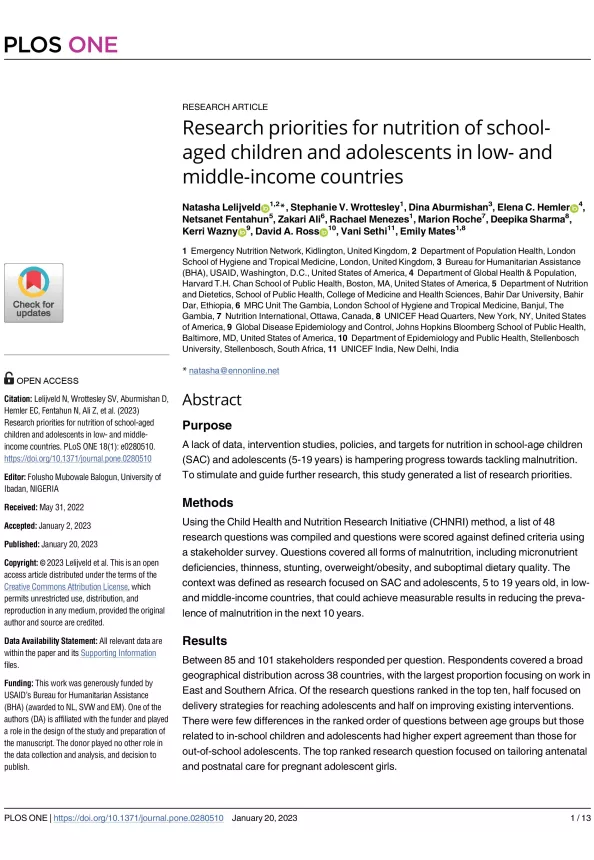Research priorities for nutrition of school-aged children and adolescents in low- and middle-income countries
Publication details
Abstract
Purpose
A lack of data, intervention studies, policies, and targets for nutrition in school-age children (SAC) and adolescents (5-19 years) is hampering progress towards tackling malnutrition. To stimulate and guide further research, this study generated a list of research priorities.
Methods
Using the Child Health and Nutrition Research Initiative (CHNRI) method, a list of 48 research questions was compiled and questions were scored against defined criteria using a stakeholder survey. Questions covered all forms of malnutrition, including micronutrient deficiencies, thinness, stunting, overweight/obesity, and suboptimal dietary quality. The context was defined as research focused on SAC and adolescents, 5 to 19 years old, in low-and middle-income countries, that could achieve measurable results in reducing the prevalence of malnutrition in the next 10 years.
Results
Between 85 and 101 stakeholders responded per question. Respondents covered a broad geographical distribution across 38 countries, with the largest proportion focusing on work in East and Southern Africa. Of the research questions ranked in the top ten, half focused on delivery strategies for reaching adolescents and half on improving existing interventions. There were few differences in the ranked order of questions between age groups but those related to in-school children and adolescents had higher expert agreement than those for out-of-school adolescents. The top ranked research question focused on tailoring antenatal and postnatal care for pregnant adolescent girls.
Conclusion
Nutrition programmes should incorporate implementation research to inform delivery of effective interventions to this age group, starting in schools. Academic research on the development and tailoring of existing nutrition interventions is also needed; specifically, on how to package multisectoral programmes and how to better reach vulnerable and underserved sub- groups, including those out of school.

